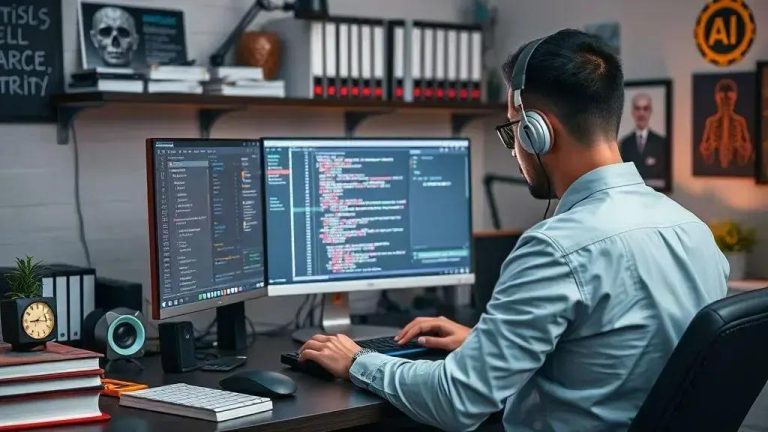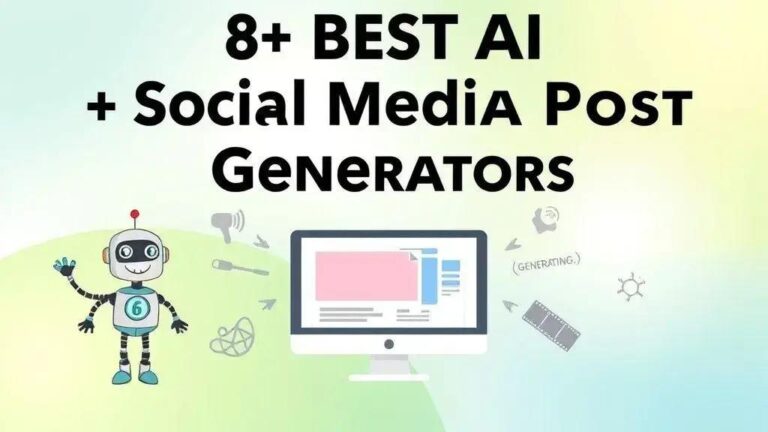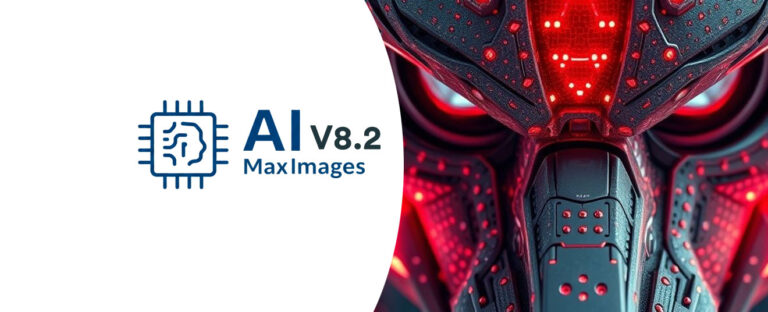AI image generators like Midjourney, Stability.ai, ChatGPT (with GPT-4o), Adobe Firefly, and Ideogram are transforming visual creation by turning text prompts into stunning visuals for various uses, from content creation to marketing. While these powerful tools offer immense creative potential, mastering them requires crafting clear, detailed prompts to overcome challenges like occasional odd results or biases. Each platform offers unique strengths, such as Ideogram’s text integration or Stability.ai’s customization, making it essential to choose the right AI image generator for your specific artistic or commercial needs.
In the world of creativity, AI image generators are reshaping how we visualize ideas. These innovative tools can turn simple prompts into stunning visuals that captivate and inspire. Curious about how they work? Let’s dive into the exciting landscape of AI-driven imagery and discover the best options available today!
Introduction to AI Image Generators
AI image generators are truly amazing tools that turn your words into incredible pictures. Imagine typing a simple phrase like “a futuristic city at sunset” and seeing a beautiful image appear right before your eyes! That’s exactly what these generators do. They’ve completely changed how people create visual content. You no longer need to be a professional artist to make stunning graphics. Just describe your vision, and the AI takes care of the rest. It’s like having a personal digital artist available whenever you need one.
These tools are becoming super popular for many reasons. People use them for fun, for work, or to get new ideas flowing. Think about creating unique images for your social media, blog posts, or even school projects. AI image generators make this process incredibly easy and fast. They save a lot of time and effort. Instead of spending hours drawing or searching for the perfect stock photo, you can generate a custom image in just a few moments. This technology is always improving, too, with new features and better results coming out regularly.
How AI Transforms Ideas into Art
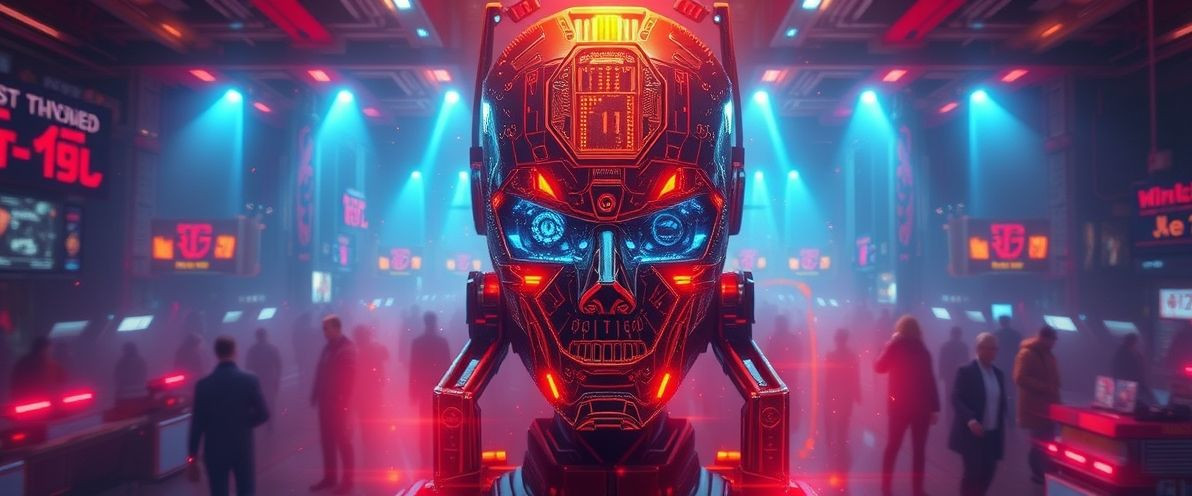
The way these generators work is quite fascinating. They learn from a massive amount of existing images and their descriptions. This helps them understand how different words and concepts look visually. So, when you give them a text prompt, they can “imagine” what that description would look like. Then, they create a brand-new image based on that understanding. It’s not just copying old pictures; it’s generating something original and unique. This process is often called text-to-image generation, and it’s a huge step forward in artificial intelligence.
Using these tools is usually very simple. You type in your detailed description, click a button, and wait a few seconds. Soon, you’ll see several image options to choose from. You can pick your favorite or adjust your words to get an even better result. This interactive way of creating visuals makes the whole experience exciting. It lets you play around with different styles, colors, and themes. Whether you want a realistic photograph or a whimsical cartoon, these generators can often deliver. They truly open up a whole new world of creative possibilities for everyone, making it easy to bring your thoughts to life.
What They Don’t Tell You About AI
While AI image generators are truly amazing, there are some things people don’t always talk about. It’s easy to get caught up in the excitement of creating cool pictures with just a few words. But like any powerful tool, AI has its quirks and challenges. It’s important to understand these hidden aspects to use AI wisely and avoid surprises. Knowing the full picture helps you get the best results and manage your expectations. Let’s look at some of the less-talked-about parts of this exciting technology.
One big thing is that AI isn’t always perfect. Sometimes, the images it creates can be a bit strange or even funny. You might ask for a cat, and it gives you a cat with three ears! This happens because the AI is still learning. It tries its best to understand your words, but it doesn’t always get it right. Also, the quality of the image often depends on how good your prompt is. A vague prompt might give you a vague picture. You really need to be specific to guide the AI effectively. It’s a partnership between you and the machine.
The Issue of Bias in AI Art
Another important point is that AI image generators can sometimes show bias. This isn’t because the AI is trying to be unfair. It’s because the AI learns from a huge amount of data, mostly from the internet. If that data has certain biases, the AI will pick them up. For example, if most images of doctors in its training data are men, the AI might mostly create male doctors. This can lead to images that don’t represent everyone fairly. It’s a big challenge that developers are working hard to fix, but it’s something users should be aware of when generating images.
Also, there are questions about who owns the art created by AI. If you type a prompt and the AI makes a picture, is it truly yours? This is a new area, and laws are still catching up. Some artists worry about AI using their styles without permission. It’s a complex topic with no easy answers right now. Plus, creating these images uses a lot of computer power, which means energy. The environmental impact of running these powerful AI systems is another hidden cost. So, while AI art is cool, it’s good to think about these bigger issues too. It helps us use the technology more responsibly.
Pro-Tip: Start With a Clear Vision
When you’re using AI image generators, the best advice we can give is to start with a very clear vision. Don’t just type in a few random words and hope for the best. Think about what you really want to see. What’s the main subject? What kind of feeling should the image have? The clearer your idea is in your head, the better you can describe it to the AI. This step is super important because the AI can only work with the information you give it. A fuzzy idea often leads to a fuzzy picture, and nobody wants that.
Imagine you want a picture of a dog. That’s a start, but it’s not very clear. Do you want a big dog or a small one? What breed? Is it running, sleeping, or playing? What color is it? Where is it? Is it a sunny day or raining? Adding these details makes a huge difference. The more specific you are, the more likely the AI image generator will create something close to what you’re imagining. It’s like giving directions to someone; the more precise you are, the easier it is for them to find the right place.
Crafting Your Vision for Better Prompts
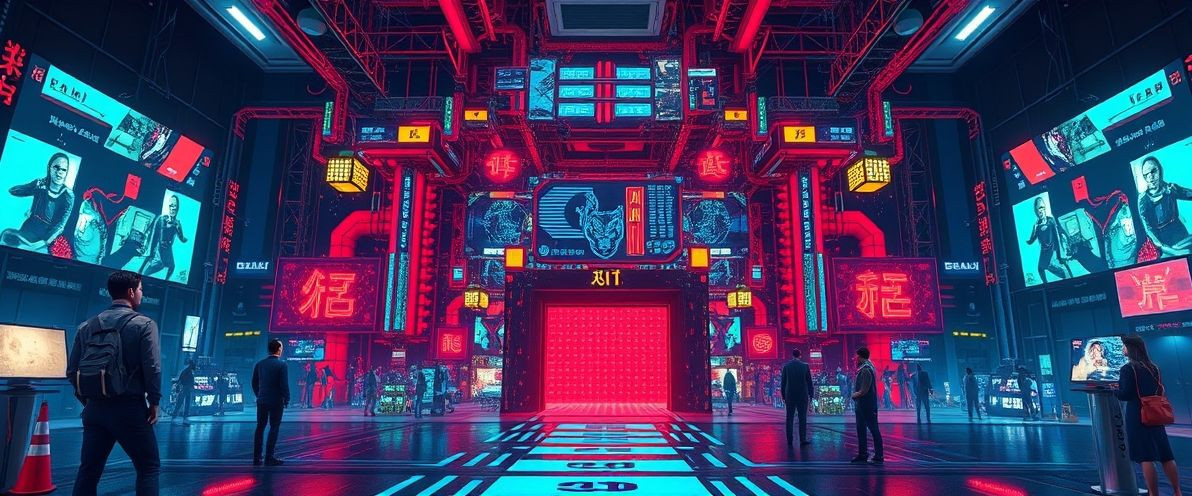
To get that clear vision, take a moment before you even touch the keyboard. Maybe close your eyes and picture the image in your mind. What colors do you see? What’s the lighting like? Is it bright and cheerful, or dark and mysterious? Think about the style too. Do you want it to look like a painting, a photograph, or a cartoon? These details are crucial for writing effective prompts. A good prompt acts like a blueprint for the AI, guiding it to build exactly what you need. Without a clear blueprint, the AI might just build something generic or unexpected.
Having a strong vision also helps you refine your prompts. If the first image isn’t quite right, you’ll know exactly what to change in your words. You can adjust the colors, the mood, or add more specific objects. This back-and-forth process is part of mastering AI image generators. It’s not just about typing; it’s about thinking creatively and communicating that creativity clearly. So, before you hit that generate button, take a moment. Get your vision crystal clear. It will save you time and lead to much more satisfying visual results. This simple pro-tip can really boost your AI art game.
Top Picks for the Best AI Image Generators
Finding the best AI image generators can feel a bit like searching for treasure. There are so many options out there now, and each one has its own special features. It’s exciting to see how far this technology has come. These tools let you create amazing visuals from just a few words. But how do you pick the right one for you? It really depends on what you want to achieve. Some generators are great for realistic photos, while others shine with artistic styles. We’ll help you understand what makes certain tools stand out.
When you’re looking at different AI image generators, think about what’s most important. Do you need something super easy to use, even if it has fewer advanced options? Or are you a power user who wants lots of control and customization? The quality of the images is also a big deal. Some tools create incredibly detailed and beautiful pictures, while others might be a bit simpler. It’s all about matching the tool to your creative goals. Don’t worry, there’s likely a perfect fit for everyone, no matter their skill level or project type.
What Makes an AI Image Generator Stand Out?
The top AI image generators usually share a few key qualities. First, they produce high-quality images that look professional and polished. This means clear details, good colors, and a consistent style. Second, they are often easy to learn and use. You shouldn’t need a special degree to make a great picture. A good user interface makes a big difference. Third, they offer flexibility. This means you can tweak your prompts, choose different styles, and even edit parts of the image after it’s made. Tools that give you more control often lead to better results.
Another important factor is the community around the tool. Some of the best generators have active users who share tips and tricks. This can be super helpful when you’re learning. Also, consider the cost. Some tools are free, while others require a subscription. Think about your budget and how often you’ll use the generator. The best choice for a hobbyist might be different from the best choice for a professional designer. We’ll explore some of the leading options soon, so you can see what each one brings to the table. Getting started with the right tool makes all the difference in your creative journey.
1. ChatGPT (with GPT-4o)
When we talk about top AI image generators, we can’t forget about ChatGPT, especially with its powerful GPT-4o model. Many people know ChatGPT for writing text, but its ability to create images is truly impressive. With GPT-4o, ChatGPT can understand your requests much better. This means it can turn your ideas into visuals with amazing accuracy. It’s like having a super smart assistant who can both write and draw for you. This makes creating images very easy and natural, even if you’re not an expert.
Using ChatGPT for image generation is super simple. You just type what you want to see, just like you would for a regular conversation. For example, you could say, “Create an image of a happy golden retriever playing in a field of sunflowers.” ChatGPT will then process your words and generate a picture that matches your description. The GPT-4o model helps it grasp complex ideas and subtle details. This leads to more creative and high-quality images. It’s a fantastic tool for anyone who needs visuals quickly without learning complicated software.
The Power of GPT-4o in Visual Creation
The latest GPT-4o model brings a lot of improvements to AI image generation. It’s much better at understanding context and nuances in your prompts. This means fewer strange or unexpected results. It can handle more detailed requests and produce images that are closer to your original vision. This makes the creative process smoother and more enjoyable. You can experiment with different styles and themes, knowing that ChatGPT will do its best to bring them to life. It’s a game-changer for quick visual content creation.
One of the biggest advantages of using ChatGPT for images is its conversational interface. You don’t need to learn special commands or navigate complex menus. You just talk to it. This makes it very accessible for everyone, from students to small business owners. It’s great for brainstorming ideas or getting a visual draft in minutes. Whether you need a simple graphic for a social media post or a unique illustration for a presentation, ChatGPT with GPT-4o can help. It truly makes advanced AI image generators available to a wider audience, simplifying the creative workflow for many.
2. Adobe Firefly
When we talk about top AI image generators, Adobe Firefly quickly comes to mind. It’s a powerful tool from Adobe, a company known for its creative software. Firefly is designed to help you create amazing images and text effects using simple text prompts. What makes it special is its focus on being safe for commercial use. This means the images it creates are generally free from copyright issues. This is a huge plus for businesses and creators who need reliable content. It’s a fantastic option for anyone looking for high-quality, worry-free generative AI art.
Adobe Firefly is super easy to use, even if you’re new to AI. You just type in what you want, and Firefly generates several options for you. You can ask for anything from a realistic photo to a stylized painting. It’s really good at understanding your ideas and bringing them to life. This makes the creative process much faster and more fun. Plus, Firefly is constantly getting better, with new features and improved image quality. It’s a strong contender in the world of AI image generators, offering both power and peace of mind to its users.
Seamless Integration with Adobe Creative Cloud
One of the biggest advantages of Adobe Firefly is how well it works with other Adobe products. If you use Photoshop, Illustrator, or other Creative Cloud apps, Firefly fits right in. You can generate images directly within these programs or easily bring Firefly-created visuals into your existing projects. This seamless integration saves a lot of time and makes your workflow much smoother. It’s like having a super creative assistant built right into your favorite design tools. This feature is especially helpful for graphic designers and digital artists who already rely on Adobe’s ecosystem.
Firefly also offers unique features like text effects and generative fill. With text effects, you can apply amazing textures and styles to your words, making them pop. Generative fill lets you add or remove objects from images with incredible ease. Just select an area and type what you want to do. This makes editing photos and creating new compositions incredibly simple. The quality of the output is consistently high, making it a reliable choice for professional and personal projects. For anyone serious about digital creation, Adobe Firefly is definitely one of the best AI image generators to explore. It truly empowers creativity for everyone.
3. Ideogram: The Master of Text
When it comes to AI image generators, one tool really stands out for a special reason: Ideogram. While many AI tools can create amazing pictures, they often struggle with adding clear and correct text into those images. This is where Ideogram shines. It’s known as the master of text because it can generate images with accurate, readable words and phrases. Imagine needing a poster with a specific slogan, or a book cover with a title. Ideogram makes this possible without you having to edit the image later. It’s a huge advantage for many creative projects.
Other AI image generators might give you gibberish or badly spelled words when you ask for text. Ideogram, however, has been specifically trained to handle typography. This means it understands how letters and words should look and fit together within an image. It can create stylish fonts and integrate text seamlessly into the visual design. This feature alone makes it incredibly valuable for graphic designers, marketers, and anyone who needs visuals that communicate a message clearly. It truly solves a common headache in the world of AI art creation.
Why Ideogram Excels at Text Generation
The ability to generate reliable text within images is a game-changer. Think about creating logos, banners, or social media posts. These often need specific words to convey their purpose. Before Ideogram, you’d typically generate the image first, then use another program like Photoshop to add the text. This added an extra step and more work. With Ideogram, you can get the complete visual, text and all, in one go. This saves a lot of time and effort, making your creative process much more efficient. It’s a powerful feature that sets it apart from many competitors.
Using Ideogram is also very user-friendly. You simply describe the image you want, including the text you need to appear in it. For example, you might type, “A vintage-style poster for a coffee shop, with the words ‘Fresh Brew’ in a fancy script.” Ideogram will then work its magic, giving you options that include your requested text. It’s not just about putting words on a picture; it’s about making those words look good and fit the overall style. For anyone who has struggled with other AI image generators to get text right, Ideogram is a breath of fresh air. It truly is a top choice when your visual needs include perfectly placed words.
4. Stability.ai for Customization
When you’re looking for AI image generators that give you a lot of control, Stability.ai is a top choice. This platform is famous for its open-source models, like Stable Diffusion. What does “open-source” mean? It means the basic code is available for anyone to use and change. This gives users incredible power to customize how their images are made. You’re not just picking from a few styles. You can really dig in and fine-tune the AI to create exactly what you envision. This level of customization is a big deal for artists and developers alike. It lets you push the boundaries of what AI can create.
Stability.ai is perfect for those who want more than just a quick picture. It’s for people who want to experiment and develop their own unique visual styles. You can adjust many settings, like the strength of the AI’s creativity or how closely it follows your prompt. This means you can make images that look truly original. It’s not just about generating; it’s about guiding the AI to match your specific artistic vision. This makes Stability.ai a powerful tool for professionals and serious hobbyists. It truly stands out among other AI image generators for its flexibility.
Unleashing Creativity with Stable Diffusion
The core of Stability.ai’s customization comes from models like Stable Diffusion. These models allow users to fine-tune them with their own datasets. Imagine you have a specific art style you love. You can train Stable Diffusion with examples of that style. Then, the AI will generate new images that look just like it. This is a huge advantage for creating consistent branding or developing a signature artistic look. It’s like teaching the AI your personal preferences. This deep level of control is what makes Stability.ai so appealing to many creators.
Beyond fine-tuning, Stability.ai also offers many parameters you can tweak. You can control things like image resolution, sampling methods, and even negative prompts. Negative prompts tell the AI what *not* to include in your image. This helps you avoid unwanted elements and get cleaner results. The community around Stability.ai is also very active. People share their custom models and tips, which helps everyone learn and grow. If you’re serious about taking your AI art to the next level and want maximum control, Stability.ai is definitely one of the AI image generators you should explore. It empowers you to be the true artist.
5. Midjourney: The Artistic Choice
When you’re looking for AI image generators that truly excel at creating stunning, artistic visuals, Midjourney is often the first name that comes up. It’s known for producing incredibly beautiful and imaginative images that often look like they were made by a professional artist. If your goal is to create art that is visually striking and unique, Midjourney is probably your best bet. It has a knack for interpreting prompts in a very creative way, often adding a touch of magic to your ideas. This makes it a favorite among artists, designers, and anyone who wants to push the boundaries of visual creativity.
Midjourney operates a bit differently from some other AI image generators. You usually interact with it through a Discord server. This might sound a little unusual at first, but it creates a vibrant community where users share their creations and learn from each other. This collaborative environment is a huge part of the Midjourney experience. You can see what others are making, get inspiration, and even refine your own prompts based on what’s working for others. It’s more than just a tool; it’s a creative hub for AI art enthusiasts.
Crafting Masterpieces with Midjourney’s AI
What makes Midjourney so special is its ability to generate images with a distinct artistic flair. It’s not just about realism; it’s about aesthetics and mood. You can ask for a specific style, like “impressionist painting” or “cyberpunk art,” and Midjourney will deliver. The details in its images are often breathtaking, from the play of light and shadow to the textures and colors. This focus on artistic quality sets it apart. It’s an excellent tool for creating concept art, illustrations, and any visual content where beauty and creativity are key.
While Midjourney can be very powerful, mastering it takes a bit of practice. Learning how to write effective prompts is crucial to getting the best results. The more descriptive and evocative your words are, the better the AI can interpret your vision. There are many guides and tutorials available to help you get started, and the community is always ready to offer advice. If you’re passionate about creating truly artistic and high-quality visuals, and you don’t mind a slightly different interface, then Midjourney is one of the AI image generators you absolutely must try. It truly lets your imagination soar.
Mastering the Art of the Prompt
Getting great results from AI image generators really comes down to mastering the art of the prompt. Think of a prompt as your instructions to the AI. The clearer and more detailed your instructions are, the better the AI can understand what you want. It’s not just about typing a few words; it’s about painting a picture with your words. A well-crafted prompt can turn a basic idea into a stunning visual masterpiece. This skill is super important for anyone using these tools, whether for fun or for work. It helps you unlock the full potential of AI art.
Many people start by typing simple phrases, like “a forest.” While this works, the results might be generic. To get something truly special, you need to add more details. Is it a dense forest or a sparse one? What time of day is it? What kind of trees are there? Are there animals? What’s the mood? Adding these specifics helps the AI image generator create a much richer and more personalized image. It’s like giving a chef a detailed recipe instead of just saying “make dinner.” The more information, the better the outcome.
Tips for Crafting Effective Prompts
So, how do you write a really good prompt? First, be specific. Instead of “a car,” try “a vintage red sports car speeding down a coastal highway at sunset.” Second, use descriptive adjectives. Words like “vibrant,” “ethereal,” “gritty,” or “majestic” can guide the AI’s style. Third, specify the art style you want. Do you prefer “oil painting,” “photorealistic,” “cartoon,” or “sci-fi concept art”? Naming a famous artist’s style can also work, like “in the style of Van Gogh.” This helps the AI understand the artistic direction.
Don’t be afraid to experiment with different elements. You can include details about lighting, camera angles, and even emotions. For example, “a close-up portrait of a thoughtful old man, soft golden hour lighting, cinematic, 8k.” Also, try using negative prompts. These tell the AI what *not* to include. For instance, if you keep getting blurry images, you might add “–no blurry, –no distorted.” This helps refine the output. Remember, it’s an iterative process. You might need to try a few different prompts, or tweak your existing ones, to get the perfect image. The more you practice, the better you’ll become at guiding these powerful AI image generators to create exactly what you envision.
Use Cases for AI Image Generators
AI image generators are not just for fun; they have tons of practical uses in many different areas. These tools are changing how people create visuals for work, school, and even their hobbies. Think about all the times you need a picture for something. Instead of searching endlessly or hiring someone, you can now make it yourself in minutes. This makes creativity much more accessible for everyone. Let’s explore some of the cool ways people are putting these powerful tools to work every day.
One of the biggest uses is in content creation. Bloggers, social media managers, and website owners constantly need fresh images. With an AI generator, they can quickly create unique graphics for their posts, articles, and social media feeds. This saves a lot of time and helps their content stand out. Imagine needing a picture for a blog about healthy eating. You could prompt the AI to create “a vibrant salad bowl with fresh vegetables on a rustic wooden table.” It’s fast, easy, and gives you exactly what you need.
Boosting Marketing and Advertising Efforts
Marketers and advertisers are also finding huge value in AI image generators. They can use these tools to design eye-catching ads, banners, and promotional materials. Need an image for a new product launch? Describe the product and the mood you want, and the AI can generate several options. This helps them test different visual ideas quickly and find what works best for their audience. It’s a game-changer for creating engaging campaigns without a huge budget or a long wait time for designers. Custom visuals can really grab people’s attention.
For artists and designers, AI image generators are fantastic for brainstorming and creating concept art. If you’re working on a video game or a movie, you can use AI to quickly visualize different characters, environments, or props. This speeds up the early stages of design and helps bring ideas to life faster. It’s like having an endless supply of creative sketches at your fingertips. Even students can use these tools for school projects, making presentations or reports more visually appealing. The possibilities are truly endless, making AI image generators a versatile tool for almost anyone who needs visuals.
FAQs About AI Image Generators
What exactly are AI image generators?
AI image generators are computer programs that create unique pictures from text descriptions you provide. They use artificial intelligence to understand your words and visualize them.
How do AI image generators work?
These tools learn from vast datasets of images and text. When you give a prompt, the AI uses this knowledge to generate a new image that matches your description, often in seconds.
Are AI-generated images truly original?
Yes, most AI image generators create original images. They combine learned patterns and styles to produce something new, rather than copying existing pictures.
Can I use AI-generated images for commercial purposes?
It depends on the specific AI image generator’s terms of service. Some, like Adobe Firefly, are designed for commercial use, but always check the platform’s rules.
Why do AI images sometimes look strange or have mistakes?
AI models are still learning and can make mistakes, like distorted features. This often happens with vague prompts or if the AI hasn’t seen enough similar examples during training.
How important is the prompt in AI image generation?
The prompt is crucial. A clear, detailed, and descriptive prompt helps the AI understand your vision better, leading to higher quality and more accurate image results.







